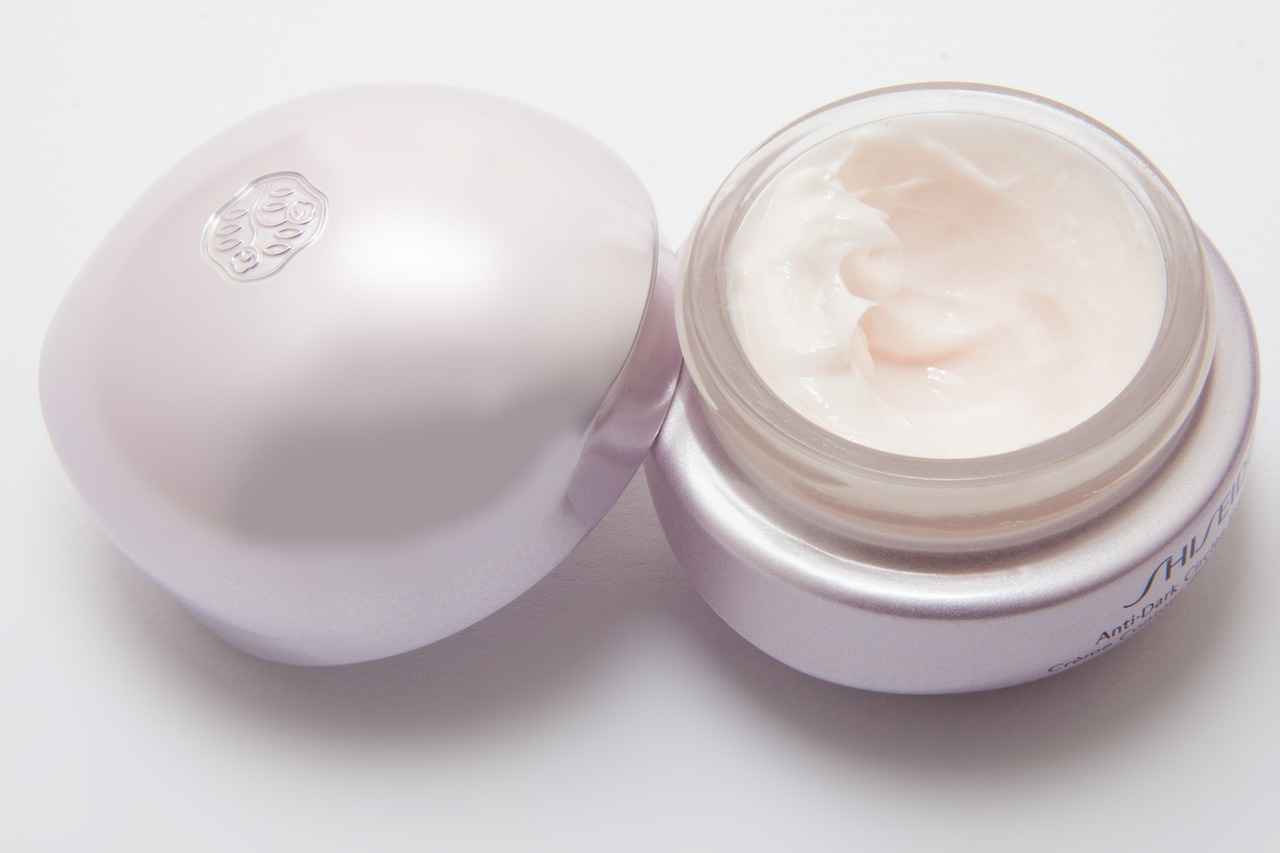Skin tags are small, benign growths that often appear on various parts of the body, particularly in areas where skin rubs against skin or clothing. While they are generally harmless, many people seek removal for cosmetic reasons or due to irritation. This article delves into the costs associated with skin tag removal, the different methods available, insurance coverage, and factors influencing the overall price, providing a comprehensive understanding for those considering this procedure.
Skin tags, medically known as acrochordons, are composed of loose collagen fibers and blood vessels surrounded by skin. They can appear anywhere on the body but are most commonly found on the neck, armpits, eyelids, and groin area. The exact cause of skin tags is not entirely understood, but they are often associated with factors such as obesity, diabetes, and hormonal changes.
The cost of skin tag removal can vary significantly based on several factors, including the method of removal, the healthcare provider’s fees, and the geographical location. On average, patients can expect to pay anywhere from $100 to $500 for the procedure.
There are several methods for skin tag removal, each with its own cost implications:
- Cryotherapy: This method involves freezing the skin tag with liquid nitrogen. The costs typically range from $100 to $500, depending on the number of tags being treated.
- Excision: A surgical procedure where the tag is cut off. Prices generally range from $150 to $400 per tag, influenced by the provider’s expertise.
- Laser Treatment: This technique uses focused light to remove the tag and can cost between $200 to $800, depending on the complexity.
Some individuals may consider home remedies or over-the-counter products for skin tag removal. While these options may be cheaper, their effectiveness and safety can vary significantly. It’s crucial to exercise caution and consult a healthcare provider before attempting any non-medical methods.
Insurance coverage for skin tag removal often depends on whether the tags are deemed medically necessary. If the skin tags cause discomfort or irritation, there is a possibility that insurance may cover the procedure. Patients should check with their insurance provider to clarify coverage and potential out-of-pocket expenses.
Several factors can affect the overall cost of skin tag removal:
- Geographic Location: Prices can vary significantly based on location, with urban areas often charging more due to higher operational costs.
- Provider Experience: Experienced dermatologists may charge higher fees, but their expertise can lead to better outcomes, potentially justifying the cost.
- Method Chosen: As previously mentioned, different removal methods come with varying price tags.
While skin tag removal is generally safe, it can carry risks such as infection or scarring. Being aware of potential complications is essential for informed decision-making. Common side effects post-removal include redness, swelling, and minor discomfort, which are typically temporary.
To minimize risks associated with skin tag removal, it is crucial to choose a qualified healthcare provider and follow aftercare instructions diligently. Ensuring a sterile environment and proper technique can significantly reduce the chances of complications.
In summary, understanding the costs associated with skin tag removal, the various methods available, and the factors influencing prices can help individuals make informed decisions. Consulting with a healthcare provider can provide tailored advice and guidance throughout the process.

What Are Skin Tags and Why Do They Occur?
Skin tags are small, benign growths that can develop on various parts of the body, often appearing as soft, flesh-colored bumps. They are most commonly found in areas where skin rubs against skin or clothing, such as the neck, armpits, eyelids, and groin. While they are generally harmless, understanding the reasons behind their occurrence is crucial for those who may be concerned about their appearance or the possibility of removal.
Skin tags, also known as acrochordons, are composed of collagen fibers, blood vessels, and epithelial cells. They can vary in size, from a few millimeters to several centimeters. The precise cause of skin tags is not entirely understood, but several factors have been identified that may contribute to their development.
- Friction: The most significant factor is friction. Areas of the body that experience frequent rubbing, such as skin folds, are more prone to skin tags. This is why they often appear in places like the neck or underarms.
- Genetics: There is a hereditary component to skin tags. If your parents or siblings have them, you may be more likely to develop them as well.
- Age: Skin tags are more prevalent in older adults, likely due to the natural aging process of the skin, which can lead to increased skin laxity and friction.
- Hormonal Changes: Hormonal fluctuations, particularly during pregnancy, can lead to the development of skin tags. This is believed to be related to the increased levels of certain hormones that affect skin growth.
- Obesity: Individuals who are overweight or obese are at a higher risk for developing skin tags, possibly due to increased friction in skin folds.
- Diabetes: There is a noted correlation between skin tags and insulin resistance, a condition often associated with type 2 diabetes. This may explain why skin tags are more common in individuals with diabetes.
While skin tags are typically harmless, they may cause discomfort if they become snagged on clothing or jewelry. In such cases, individuals may consider removal, which can be done through various methods, including cryotherapy, excision, or laser treatment.
Understanding the factors that contribute to skin tag formation can assist individuals in recognizing their own risk factors and making informed decisions about whether removal is necessary. Consulting with a dermatologist can provide personalized insights and recommendations based on individual circumstances.
Ultimately, while skin tags are benign and pose no health risks, their presence can sometimes affect self-esteem. Awareness of their causes and treatment options can empower individuals to take action if they choose to do so.

How Much Does Skin Tag Removal Cost?
When considering skin tag removal, understanding the cost implications is essential. The expenses can fluctuate significantly based on several factors, including the removal method, the provider’s fees, and the geographical location. This article delves into the typical costs associated with skin tag removal, providing a comprehensive overview to help you navigate this process.
The cost of skin tag removal can vary widely, typically ranging from $100 to $500 or more. The final price often hinges on the following factors:
- Method of Removal: Different techniques come with varying costs.
- Provider’s Fees: Dermatologists and clinics may charge differently based on their expertise and reputation.
- Location: Urban areas tend to have higher costs due to increased overheads.
Here’s a more detailed breakdown of typical expenses associated with various methods of skin tag removal:
Several methods exist for skin tag removal, each with its own cost implications:
- Cryotherapy: This method involves freezing the skin tag and typically costs between $100 and $500, depending on the number of tags and the provider.
- Excision: This surgical procedure involves cutting off the tag, with costs generally ranging from $150 to $400 per tag, influenced by the provider’s expertise.
- Laser Treatment: This advanced method can be more expensive, often costing between $200 and $800, but provides precise removal with minimal scarring.
Some individuals may consider home remedies or over-the-counter products for skin tag removal. While these options can be cheaper, their effectiveness and safety can vary significantly. It’s crucial to consult with a healthcare provider before attempting any non-medical removal methods.
Insurance coverage for skin tag removal often depends on whether the tags are deemed medically necessary. Understanding your policy can clarify potential out-of-pocket expenses. In some cases, if skin tags cause discomfort or irritation, their removal may be covered. Documentation from a healthcare provider can support claims for insurance reimbursement.
Several factors can affect the overall cost of skin tag removal:
- Provider’s Experience: Experienced dermatologists may charge higher fees, but their expertise can lead to better outcomes.
- Geographic Location: Prices can vary significantly based on location, with urban areas typically charging more.
While skin tag removal is generally safe, there are potential risks, including infection or scarring. Being aware of these complications is essential for informed decision-making. Common side effects post-removal may include redness, swelling, and minor discomfort, which usually resolve quickly.
To minimize risks associated with skin tag removal, it’s advisable to:
- Choose a qualified healthcare provider.
- Follow aftercare instructions diligently.
By understanding the costs and factors involved in skin tag removal, you can make an informed decision that aligns with your needs and budget.
What Are the Different Methods of Removal?
When it comes to skin tag removal, several methods are available, each offering unique advantages and disadvantages. Understanding these methods can help individuals make informed decisions based on their specific needs and circumstances.
Cryotherapy is a popular method that involves freezing the skin tag with liquid nitrogen. This causes the tag to fall off after a few days. The procedure is relatively quick, typically taking only a few minutes, and is often performed in a dermatologist’s office.
The cost of cryotherapy can range from $100 to $500, depending on factors such as the number of tags being treated and the provider’s fees. While effective for many, some individuals may experience discomfort during the procedure or minor side effects like redness or swelling.
Excision is a more invasive approach where a healthcare provider surgically cuts out the skin tag. This method is often recommended for larger tags or those that are causing irritation. Excision ensures complete removal and minimizes the chance of recurrence.
The typical cost for excision ranges from $150 to $400 per tag. The price can vary based on the provider’s expertise and the complexity of the procedure. Patients may require local anesthesia, which can add to the overall cost.
Laser treatment is another effective method for skin tag removal. This technique uses focused light beams to vaporize the tag tissue. One of the main advantages of laser treatment is its precision, which can result in minimal scarring.
The costs for laser treatment can be higher than other methods, often ranging from $200 to $800 per session. While it may be more expensive, many patients find the benefits of reduced scarring and quicker recovery times worth the investment.
Some individuals may opt for over-the-counter (OTC) products designed for skin tag removal. These typically include topical solutions that claim to dry out the tag. While these products may be more affordable, their effectiveness can vary significantly.
Prices for OTC solutions generally range from $10 to $50. However, it’s essential to approach these products with caution, as improper use can lead to skin irritation or infection.
When considering the various methods, it’s crucial to weigh the effectiveness and safety of each option. Cryotherapy and laser treatments are generally well-tolerated and have high success rates, while excision may be necessary for larger or problematic tags.
Regardless of the method chosen, consulting with a qualified dermatologist is essential. They can provide personalized recommendations based on individual circumstances and medical history, ensuring the safest and most effective treatment plan.
Many patients wonder whether their insurance will cover the costs associated with skin tag removal. Typically, insurance may cover procedures deemed medically necessary, such as those performed to alleviate discomfort or irritation.
However, cosmetic removals are often not covered. It’s advisable to check with your insurance provider to understand your specific coverage and any potential out-of-pocket expenses you may incur.
What Is Cryotherapy and Its Costs?
Cryotherapy is a popular method for removing skin tags, utilizing extreme cold to freeze and ultimately eliminate the unwanted growths. This technique has gained traction due to its effectiveness and relatively quick procedure time. However, understanding the costs associated with cryotherapy is essential for anyone considering this treatment.
The cost of cryotherapy for skin tag removal can vary significantly. Generally, patients can expect to pay between $100 and $500. Several factors influence this price range, including:
- Number of Skin Tags: The more tags you have, the higher the total cost. Many providers charge on a per-tag basis, which can add up quickly.
- Provider’s Location: Geographic location plays a crucial role in determining costs. Urban areas often have higher prices due to increased operational expenses.
- Provider’s Experience: Dermatologists or clinics with more experience may charge higher fees, but their expertise can lead to better results.
- Facility Fees: The type of facility where the procedure is performed can also affect the overall cost. Specialized dermatology clinics may have different pricing structures than general medical practices.
During a cryotherapy session, a healthcare provider will apply liquid nitrogen to the skin tag, freezing it for a few seconds. This process causes the cells to die, and the tag will eventually fall off within a week or two. Most patients report minimal discomfort during the procedure, often describing it as a brief stinging sensation.
While cryotherapy is generally safe, it is essential to consult with a qualified professional to assess whether this method is suitable for your specific skin type and the number of tags present. Additionally, patients should inquire about the total costs upfront, including any potential follow-up visits or additional treatments that may be necessary.
In some cases, insurance may cover part of the costs if the skin tags are causing discomfort or other medical issues. It is advisable to check with your insurance provider to understand your coverage options and any out-of-pocket expenses you might incur.
Overall, cryotherapy is a viable option for those looking to remove skin tags effectively. By understanding the associated costs and factors that influence pricing, individuals can make informed decisions about their treatment options. Whether you opt for cryotherapy or another removal method, the key is to prioritize safety and choose a reputable provider.
How Does Excision Work and What Are Its Costs?
When considering skin tag removal, one of the most common methods is excision. This surgical procedure involves cutting off the skin tag at its base, ensuring complete removal. Excision is typically performed in a clinical setting by a qualified healthcare professional, such as a dermatologist, and is often preferred for its effectiveness and minimal risk of recurrence.
During the excision process, the area around the skin tag is usually numbed with a local anesthetic to minimize discomfort. The healthcare provider then carefully cuts away the tag using sterile instruments. This method is particularly beneficial for larger skin tags or those that are located in sensitive areas, as it allows for precise removal without damaging surrounding skin.
As for the cost of excision, it can vary significantly based on several factors:
- Provider’s Expertise: Highly experienced dermatologists may charge more for their services, but their skills can lead to better outcomes.
- Geographical Location: Prices tend to be higher in urban areas due to increased operational costs.
- Complexity of the Procedure: If the skin tag is larger or located in a challenging area, the cost may increase.
On average, the cost for excision ranges from $150 to $400 per skin tag. This price typically includes the consultation fee, the excision procedure itself, and any necessary follow-up appointments. However, it’s essential to check with your healthcare provider for a detailed breakdown of costs to avoid unexpected expenses.
In some cases, insurance may cover the cost of excision if the skin tags are deemed medically necessary. This is often determined if the tags cause irritation or discomfort, making it important to document any symptoms and discuss them with your provider.
While excision is generally safe, it is not without risks. Potential complications include infection, scarring, or bleeding. To minimize these risks, it is crucial to follow post-operative care instructions provided by your healthcare professional. Common side effects may include redness, swelling, and minor discomfort, which usually resolve quickly.
In summary, excision is a widely used method for skin tag removal, known for its effectiveness and relatively straightforward procedure. Understanding the costs associated with excision, as well as the factors influencing these costs, can help you make an informed decision regarding your skin tag removal options.
Are There Non-Medical Removal Options?
When it comes to skin tag removal, many individuals seek alternatives to traditional medical procedures. Non-medical removal options often attract attention due to their perceived affordability and convenience. However, it is crucial to understand both the potential benefits and risks associated with these methods.
Several non-medical methods are available for skin tag removal. Here are some of the most popular:
- Home Remedies: Common home remedies include the application of tea tree oil, apple cider vinegar, or even dental floss. While some users report success, the effectiveness of these methods can vary significantly.
- Over-the-Counter Products: Various over-the-counter solutions are marketed specifically for skin tag removal. These products often contain ingredients designed to dry out the skin tag, leading to its eventual fall off.
- Natural Oils: Essential oils, such as oregano oil and castor oil, are often touted for their healing properties. Users may apply these oils directly to the skin tag, hoping for a natural remedy.
Many people turn to home remedies due to their low cost and accessibility. However, it’s essential to approach these methods with caution. While some individuals claim success with remedies like tea tree oil, scientific evidence supporting their effectiveness is limited. Additionally, the lack of regulation means that the quality and potency of these remedies can vary widely.
While non-medical options may seem appealing, they are not without risks. Potential complications include:
- Infection: Attempting to remove a skin tag at home can lead to open wounds, increasing the risk of infection.
- Scarring: Improper removal techniques can result in scarring or discoloration of the skin.
- Misdiagnosis: What appears to be a skin tag may actually be a different skin condition, such as a mole or wart. Self-removal without proper diagnosis can lead to serious health issues.
Over-the-counter products for skin tag removal are generally considered safe when used as directed. However, users should be aware of the following:
- Skin Sensitivity: Some ingredients can cause skin irritation or allergic reactions, particularly for those with sensitive skin.
- Limited Effectiveness: Not all products work for every individual, and some may find that they do not achieve the desired results.
Before opting for non-medical removal options, consider the following:
- Consult a Professional: It is advisable to consult a dermatologist to confirm that what you are dealing with is indeed a skin tag and to discuss safe removal options.
- Research Thoroughly: Investigate any home remedy or over-the-counter product before use. Look for reviews and scientific backing to gauge effectiveness.
- Monitor for Changes: If you decide to proceed with non-medical options, monitor the skin tag closely for any changes. If it becomes painful, changes color, or shows signs of infection, seek medical attention immediately.
In conclusion, while non-medical removal options for skin tags may seem like a cost-effective solution, it is essential to weigh the potential risks and benefits carefully. Consulting with a healthcare professional can provide guidance tailored to your specific situation, ensuring safe and effective removal.

Does Insurance Cover Skin Tag Removal?
When it comes to skin tag removal, one of the most pressing questions for many individuals is whether their insurance will cover the costs. This inquiry is particularly important as skin tags, while benign, can sometimes cause discomfort or irritation. Understanding the nuances of your insurance policy can help clarify any potential out-of-pocket expenses you may incur.
The coverage for skin tag removal by insurance companies typically hinges on whether the procedure is deemed medically necessary. If a skin tag is causing significant discomfort, irritation, or other medical issues, it may qualify for coverage. However, if the removal is considered purely cosmetic, most insurance plans will not cover the procedure.
To ascertain whether your skin tags might be considered medically necessary, consult with a healthcare provider. They can evaluate your specific situation and provide documentation that may support your claim to the insurance company. In many cases, this involves a thorough examination and possibly a report detailing how the skin tags affect your daily life.
- Review Your Insurance Policy: Familiarize yourself with the details of your insurance coverage, particularly sections related to dermatological procedures.
- Consult a Dermatologist: Schedule an appointment with a dermatologist who can assess your skin tags and recommend the best course of action.
- Document Symptoms: Keep a record of any discomfort or irritation caused by the skin tags, as this information can be crucial for insurance purposes.
Once you’ve consulted with a dermatologist, the next step is to submit a request for insurance approval. This process may involve:
- Submitting Medical Documentation: Provide your insurance company with the necessary paperwork, including your dermatologist’s notes and any relevant medical history.
- Waiting for Approval: Depending on your insurance provider, the approval process can take anywhere from a few days to several weeks.
- Understanding Denials: If your request is denied, don’t hesitate to appeal the decision. Often, additional documentation or a second opinion can help sway the outcome in your favor.
If your insurance does not cover skin tag removal, or if you choose to proceed without insurance, it’s essential to be aware of the potential costs involved. The price for skin tag removal can vary significantly based on:
- The Method of Removal: Techniques such as cryotherapy, excision, or laser treatment can have different price points.
- Provider Experience: Highly skilled dermatologists may charge more for their services, but their expertise can lead to better outcomes.
- Geographic Location: Costs can vary widely depending on where you live, with urban areas often being more expensive.
If your insurance does not cover skin tag removal, consider exploring alternative financing options. Many dermatology clinics offer payment plans or financing to help manage the costs. Additionally, some over-the-counter products claim to remove skin tags, but their effectiveness and safety can vary, so it’s advisable to consult with a healthcare provider before attempting these methods.
In summary, understanding your insurance coverage for skin tag removal is crucial in managing your healthcare expenses. By consulting with a qualified dermatologist and thoroughly reviewing your insurance policy, you can navigate the complexities of coverage and ensure that you make informed decisions regarding your skin health.
When Is Removal Considered Medically Necessary?
Understanding when skin tag removal is considered medically necessary can significantly impact both your health and your wallet. Skin tags, or acrochordons, are small, benign growths that often appear in areas where skin rubs against skin or clothing. While these growths are typically harmless, there are instances when their removal is justified for medical reasons.
Skin tags may become a concern if they cause discomfort or irritation. For example, tags located in areas that experience frequent friction, such as the neck, armpits, or groin, can lead to pain or irritation. In such cases, removal may be recommended by a healthcare provider.
Insurance coverage for skin tag removal largely hinges on whether the procedure is deemed medically necessary. If a skin tag is causing significant discomfort or has the potential for complications, such as becoming snagged on clothing or jewelry, your healthcare provider may document these issues to support a claim for insurance coverage.
To increase the chances of insurance coverage, it is essential to provide thorough documentation from a healthcare provider. This may include:
- Medical history: Detailing any prior issues related to the skin tags.
- Physical examination notes: A healthcare provider should assess the skin tags and note any symptoms.
- Photographic evidence: In some cases, photos may help illustrate the extent of the problem.
Leaving problematic skin tags untreated can lead to various complications. These may include:
- Infection: Skin tags can become irritated and infected, especially if they are frequently rubbed or scratched.
- Bleeding: If a skin tag is snagged, it may bleed and require medical attention.
- Emotional distress: For some individuals, visible skin tags can cause self-consciousness and affect mental well-being.
During a consultation with a dermatologist, ensure that you discuss:
- Your symptoms: Be clear about any discomfort caused by the skin tags.
- Removal options: Ask about various methods available for skin tag removal.
- Insurance questions: Inquire about the likelihood of insurance coverage based on your circumstances.
Some individuals may explore home remedies or over-the-counter solutions for skin tag removal. While these options can be less expensive, they often lack the efficacy and safety of professional treatments. It is advisable to consult with a healthcare provider before attempting any alternative methods.
In summary, skin tag removal can be considered medically necessary in cases of discomfort, irritation, or potential complications. Proper documentation and consultation with a healthcare provider can help in navigating insurance coverage and ensuring that you receive the appropriate care.
What Should You Expect During a Consultation?
When preparing for a consultation with a dermatologist regarding skin tag removal, it’s essential to understand what to expect during the appointment. This initial visit is a critical step in assessing your skin condition and exploring the best options for removal.
During your consultation, the dermatologist will perform a thorough examination of your skin tags. They will assess the size, location, and number of tags present. This evaluation is vital for determining the most appropriate removal method. The dermatologist will also take the time to discuss your medical history, including any previous skin conditions or allergies, which might influence the treatment plan.
After the assessment, the dermatologist will outline various removal options available. These may include:
- Cryotherapy: Freezing the skin tags with liquid nitrogen.
- Excision: Surgically cutting off the skin tags.
- Laser Treatment: Using laser technology to remove the tags.
Each method has its cost implications, which the dermatologist will explain. Typically, you can expect to receive a cost estimate that reflects the method chosen, the number of tags, and any additional fees for the procedure.
Another essential aspect of your consultation will be discussing potential insurance coverage. The dermatologist will help you understand whether your insurance plan covers skin tag removal. This often depends on whether the removal is deemed medically necessary. If your skin tags are causing discomfort or irritation, insurance may cover the procedure. Be sure to ask about the documentation required to support your claim.
To make the most of your consultation, consider the following tips:
- Make a List: Write down any questions or concerns you have regarding your skin tags and the removal process.
- Document Your Medical History: Be prepared to discuss your medical history, including any medications you are currently taking.
- Bring Insurance Information: If applicable, bring your insurance card and any relevant documents to facilitate the discussion about coverage.
After your consultation, the dermatologist will provide you with a clear plan for treatment, including the next steps. You will also be informed about any potential side effects associated with the chosen removal method, as well as aftercare instructions to ensure proper healing.
Overall, a consultation with a dermatologist is an excellent opportunity to address any concerns about skin tags and explore removal options. By being prepared and informed, you can ensure a smooth process and achieve the best results for your skin health.

What Factors Influence the Cost of Skin Tag Removal?
When considering skin tag removal, understanding the various factors that influence the overall cost is crucial for effective budgeting. These factors can significantly impact the final price you may pay for the procedure. In this section, we will explore the key elements that contribute to the cost of skin tag removal.
- Provider’s Experience: The expertise and experience of the healthcare provider can play a significant role in determining the cost. Highly skilled dermatologists or surgeons often charge more due to their advanced training and proven track record. Their experience can also lead to better outcomes and fewer complications, making the higher cost worthwhile.
- Geographic Location: The cost of skin tag removal can vary widely based on where you live. Urban areas typically have higher operational costs, which can translate to increased prices for medical procedures. Conversely, rural areas may offer more affordable options. It’s essential to research local providers to find competitive pricing.
- Method of Removal: Different removal methods come with distinct costs. For instance, cryotherapy, which involves freezing the skin tag, might range from $100 to $500 depending on the number of tags and the provider. In contrast, excision, a surgical procedure, can cost between $150 and $400 per tag. Understanding the pros and cons of each method can help you make an informed decision.
- Number of Skin Tags: The total number of skin tags being removed can also affect the overall cost. Many providers offer discounts for multiple tags, so it’s worth discussing this with your dermatologist during the consultation.
- Insurance Coverage: Whether your insurance will cover the procedure can significantly influence your out-of-pocket expenses. If the skin tags are deemed medically necessary, your insurance may cover part or all of the removal costs. Always check with your insurance provider to understand your specific coverage.
By considering these factors, you can better prepare for the financial aspect of skin tag removal. It’s advisable to consult with multiple providers to compare prices and services, ensuring you receive the best care for your budget.
Planning for skin tag removal involves more than just understanding the costs. Here are some steps you can take:
- Consultation: Schedule consultations with various dermatologists to get a detailed estimate of the costs involved. This will also give you an opportunity to ask about their experience and the methods they recommend.
- Discuss Payment Options: Inquire about payment plans or financing options that may be available to help manage the costs.
- Check for Hidden Fees: Ensure you understand all potential fees, including consultation fees, anesthesia costs, and follow-up visits, to avoid surprises.
By being proactive and informed, you can navigate the financial aspects of skin tag removal more effectively, ensuring a smoother experience overall.
How Does Location Affect Costs?
When considering skin tag removal, one of the most significant factors influencing the overall cost is geographic location. Prices can vary dramatically based on where you live, and understanding these variations can help you make informed decisions regarding your treatment options.
In urban areas, the cost of skin tag removal tends to be higher compared to rural locations. This disparity is primarily due to increased operational costs faced by healthcare providers in cities. Rent, salaries, and other overhead expenses are typically more substantial in metropolitan settings, leading to higher prices for medical services.
The local market also plays a crucial role in determining the cost of skin tag removal. In areas where there are many dermatologists or cosmetic clinics, competition can drive prices down. Conversely, in regions with fewer providers, prices may be inflated due to a lack of options. Researching local rates can provide insight into what you might expect to pay.
Healthcare costs can vary significantly from one region to another. For instance, states with a higher cost of living, such as California or New York, often have higher prices for skin tag removal. In contrast, states with a lower cost of living may offer more affordable options. It’s essential to consider regional economic factors when evaluating potential costs.
The extent of insurance coverage can also be influenced by your geographic location. Some insurance plans may have different rules regarding coverage based on local practices and standards. Therefore, it’s advisable to check with your insurance provider to understand how location might impact your out-of-pocket expenses for skin tag removal.
In some cases, individuals may consider traveling to another city or state for skin tag removal if they find significantly lower prices elsewhere. However, it’s important to factor in travel costs, accommodation, and potential follow-up visits when calculating the overall expense. Weighing these factors can help you decide if traveling for treatment is a financially sound choice.
During your initial consultation, dermatologists may charge varying fees based on their location. Urban practices may have higher consultation fees, while rural clinics might offer more competitive rates. Understanding these differences can help you budget for your treatment effectively. Always ask for a detailed breakdown of costs during your consultation.
To find affordable skin tag removal options, consider the following strategies:
- Research local clinics and their pricing structures.
- Look for special promotions or discounts offered by dermatology practices.
- Consult with multiple providers to compare prices and services.
- Check if your insurance covers any part of the procedure.
By taking the time to explore your options and understanding how location affects costs, you can make a more informed decision about your skin tag removal. Remember, while cost is an important factor, the experience and qualifications of the provider should also be a priority to ensure safe and effective treatment.
What Role Does Provider Expertise Play?
When it comes to skin tag removal, the expertise of the provider can significantly influence both the cost and the quality of the outcome. Many individuals may find themselves questioning whether to opt for a highly experienced dermatologist or a less seasoned practitioner. While the fees associated with experienced dermatologists may be higher, the potential benefits they offer can often justify the expense.
Experienced dermatologists bring a wealth of knowledge and skills to the table. They have undergone extensive training, which equips them with the ability to identify various skin conditions accurately. This expertise is crucial, as it ensures that the skin tags are correctly diagnosed and that the most appropriate removal method is chosen. In contrast, less experienced providers may not have the same level of diagnostic ability, which could lead to complications or suboptimal results.
Moreover, seasoned dermatologists are familiar with the latest techniques and technologies for skin tag removal. For instance, they may utilize methods such as cryotherapy, excision, or laser treatment more effectively due to their hands-on experience. Each of these methods has its own set of advantages and risks, and a knowledgeable dermatologist can guide patients towards the best option based on their unique circumstances.
Another critical aspect to consider is the potential for fewer complications. Experienced dermatologists are adept at managing any adverse effects that may arise during or after the procedure. They can recognize signs of infection or improper healing early on, allowing for timely intervention. This proactive approach not only enhances the overall outcome but also provides peace of mind for patients.
| Provider Experience Level | Potential Benefits | Cost Implications |
|---|---|---|
| Less Experienced | Basic removal techniques | Lower fees, higher risk of complications |
| Experienced Dermatologist | Advanced techniques, better outcomes | Higher fees, lower risk of complications |
Additionally, the reputation of a dermatologist can also play a role in the decision-making process. Many patients rely on reviews and recommendations from previous clients. An experienced provider often has a track record of successful procedures, which can instill confidence in potential patients. This trust is essential, especially when undergoing a procedure that involves the skin, which is often sensitive and requires careful handling.
Finally, it’s important to consider the long-term implications of choosing a qualified provider. While the initial cost may be higher, the investment can lead to better results and potentially save money in the long run by avoiding complications that might require additional treatments. In essence, the expertise of the provider not only impacts the immediate outcome of the skin tag removal but also contributes to the overall health and appearance of the skin.
In summary, while the cost of skin tag removal can vary significantly based on the provider’s experience, the benefits of choosing a qualified dermatologist are substantial. From accurate diagnosis to effective treatment and reduced risk of complications, the expertise of a seasoned professional can ultimately lead to a more satisfactory and safer experience for patients.

Are There Risks Associated with Skin Tag Removal?
When considering skin tag removal, it is crucial to understand that, while generally safe, this procedure can involve certain risks and potential complications. These risks can range from minor side effects to more serious issues, making it essential for individuals to be informed before proceeding.
The most common risks associated with skin tag removal include:
- Infection: Any procedure that breaks the skin can potentially lead to infection. It’s vital to maintain proper hygiene and follow aftercare instructions to minimize this risk.
- Scarring: Although many skin tag removal methods are designed to minimize scarring, there is still a possibility of visible marks post-removal, especially if the tag was large or if the healing process is not properly managed.
- Bleeding: Some bleeding may occur during or after the procedure, particularly with excision methods. This is usually minimal but can be concerning for some individuals.
- Allergic Reactions: If topical anesthetics or other medications are used during the procedure, there is a chance of an allergic reaction, which can complicate the healing process.
To ensure a safer skin tag removal experience, consider the following precautions:
- Choose a Qualified Provider: Selecting a licensed and experienced healthcare professional can significantly reduce the risk of complications. They will be familiar with the best practices for skin tag removal and aftercare.
- Follow Aftercare Instructions: Proper aftercare is vital for healing. This may include keeping the area clean, applying prescribed ointments, and avoiding certain activities that could irritate the site.
- Discuss Medical History: Inform your provider about any medical conditions or medications you are taking, as these can influence your risk factors and healing process.
After the removal of skin tags, some common side effects may include:
- Redness and Swelling: It’s normal to experience some redness and swelling around the removal site. This usually subsides within a few days.
- Pain or Discomfort: Minor pain is common, but it can typically be managed with over-the-counter pain relief medications.
- Scabbing: Depending on the removal method, a scab may form as the area heals. It’s important not to pick at it to avoid infection.
While most side effects are temporary, certain symptoms may warrant immediate medical attention:
- Increased Pain: If you experience significant pain that worsens over time, it could indicate an infection or other complications.
- Excessive Bleeding: If bleeding does not stop or seems excessive, seek medical help promptly.
- Signs of Infection: Look for symptoms such as fever, increasing redness, warmth, or discharge from the removal site, which may indicate an infection.
In summary, while skin tag removal is generally safe, being aware of the potential risks and side effects can help you make an informed decision. Consulting with a qualified healthcare provider and following their recommendations can significantly reduce the likelihood of complications and ensure a smoother recovery process.
What Are Common Side Effects?
When undergoing skin tag removal, it is important to be aware of the potential side effects that may occur post-procedure. Understanding these effects can help individuals prepare for their recovery and manage any discomfort effectively.
After skin tag removal, patients often experience a range of common side effects. These effects can vary depending on the method of removal used, the individual’s skin type, and the care taken during the procedure. Here are some of the most frequently reported side effects:
- Redness: It is normal to see some redness at the site of removal. This occurs as the skin responds to the treatment and typically fades within a few days.
- Swelling: Mild swelling can occur as part of the body’s natural healing process. This usually subsides within a short period.
- Minor Discomfort: Patients may experience a sensation similar to a mild sting or ache in the area where the skin tag was removed. This discomfort is generally manageable and should diminish quickly.
- Scabbing: In some cases, a scab may form as the skin heals. It is important to avoid picking at the scab to prevent infection and scarring.
- Itching: As the skin heals, some individuals may experience itching at the site of removal. This is usually a sign of healing, but if it becomes severe, consulting a healthcare provider is advisable.
Most side effects associated with skin tag removal are temporary and resolve quickly. Redness and swelling typically subside within a few days, while minor discomfort may last for a week or so. It is essential to monitor the area for any signs of infection, such as increased redness, warmth, or discharge, and to contact a healthcare provider if these symptoms occur.
Managing side effects effectively can enhance the recovery process. Here are some practical tips:
- Follow Aftercare Instructions: Adhering to the aftercare guidelines provided by your healthcare provider is crucial. This may include keeping the area clean and dry and applying any prescribed ointments.
- Use Cold Compresses: Applying a cold compress to the area can help reduce swelling and numb any discomfort.
- Avoid Irritants: Steer clear of harsh soaps or skincare products that may irritate the healing skin.
- Over-the-Counter Pain Relief: If discomfort persists, over-the-counter pain relievers can be used to alleviate pain, but consult with your provider first.
While most side effects are manageable, it is important to seek medical attention if you notice:
- Signs of Infection: Increased redness, swelling, or discharge from the site can indicate an infection.
- Severe Pain: If pain escalates rather than improves, it may require further evaluation.
- Allergic Reactions: Symptoms such as hives or difficulty breathing should prompt immediate medical attention.
In summary, while common side effects like redness, swelling, and minor discomfort are expected after skin tag removal, they are generally temporary and manageable. Being informed and prepared can help individuals navigate their recovery smoothly.
How Can You Minimize Risks?
When considering skin tag removal, it is essential to prioritize safety and minimize potential risks. While skin tag removal procedures are generally safe, complications can arise if not approached correctly. Here are several strategies to help you minimize risks associated with skin tag removal.
One of the most crucial steps in reducing risks is selecting a qualified healthcare provider. Look for a dermatologist or a licensed medical professional with experience in performing skin tag removals. Verify their credentials and read reviews from previous patients. A qualified provider is more likely to perform the procedure safely and effectively, minimizing the risk of complications such as infection or scarring.
Aftercare is critical in ensuring a smooth recovery. Following the specific aftercare instructions provided by your healthcare provider can significantly reduce the risk of complications. This may include:
- Avoiding touching or scratching the removal site
- Keeping the area clean and dry
- Applying any prescribed ointments or dressings as directed
- Monitoring for signs of infection, such as increased redness or swelling
Adhering to these guidelines can help promote healing and prevent complications.
Being well-informed about the skin tag removal procedure can help you feel more comfortable and less anxious. Understand what to expect before, during, and after the procedure. Ask your healthcare provider questions about:
- The method of removal being used
- The expected recovery time
- Any potential side effects or complications
Knowledge can empower you to take necessary precautions and recognize any unusual symptoms early on.
Certain medical conditions may increase the risks associated with skin tag removal. Inform your healthcare provider of any underlying health issues, such as diabetes or immune system disorders, as these may affect healing. Your provider may need to take additional precautions or recommend alternative methods for removal.
Different methods of skin tag removal come with varying levels of risk. For instance, while cryotherapy and laser removal are generally safe, they may not be suitable for everyone. Discuss the pros and cons of each method with your healthcare provider to determine the best option for your specific situation.
After the procedure, keep the lines of communication open with your healthcare provider. If you notice any unusual symptoms or have concerns about your recovery, do not hesitate to reach out. Early intervention can prevent minor issues from developing into more significant problems.
In summary, minimizing the risks associated with skin tag removal involves selecting a qualified healthcare provider, adhering to aftercare instructions, understanding the procedure, being aware of your health conditions, considering the removal method, and maintaining open communication. By taking these steps, you can enhance your safety and ensure a smoother recovery process.
Frequently Asked Questions
- What are skin tags?
Skin tags are small, benign growths that often appear on the neck, armpits, and other areas. They’re usually harmless but can be bothersome or unsightly.
- How much does it cost to remove skin tags?
The cost of skin tag removal can vary widely, typically ranging from $100 to $500, depending on the method used and your location.
- Does insurance cover skin tag removal?
Insurance coverage often depends on whether the skin tags are considered medically necessary. If they cause discomfort, your insurance might cover the costs.
- What are the different methods for removing skin tags?
Common methods include cryotherapy, excision, and laser treatment. Each has its own cost and effectiveness, so it’s best to consult with a healthcare provider.
- Are there any risks involved in skin tag removal?
While generally safe, risks can include infection, scarring, or minor discomfort. Choosing a qualified provider can help minimize these risks.
- What should I expect during a consultation?
During a consultation, the dermatologist will assess your skin tags, discuss removal options, and provide a cost estimate, including potential insurance coverage.




